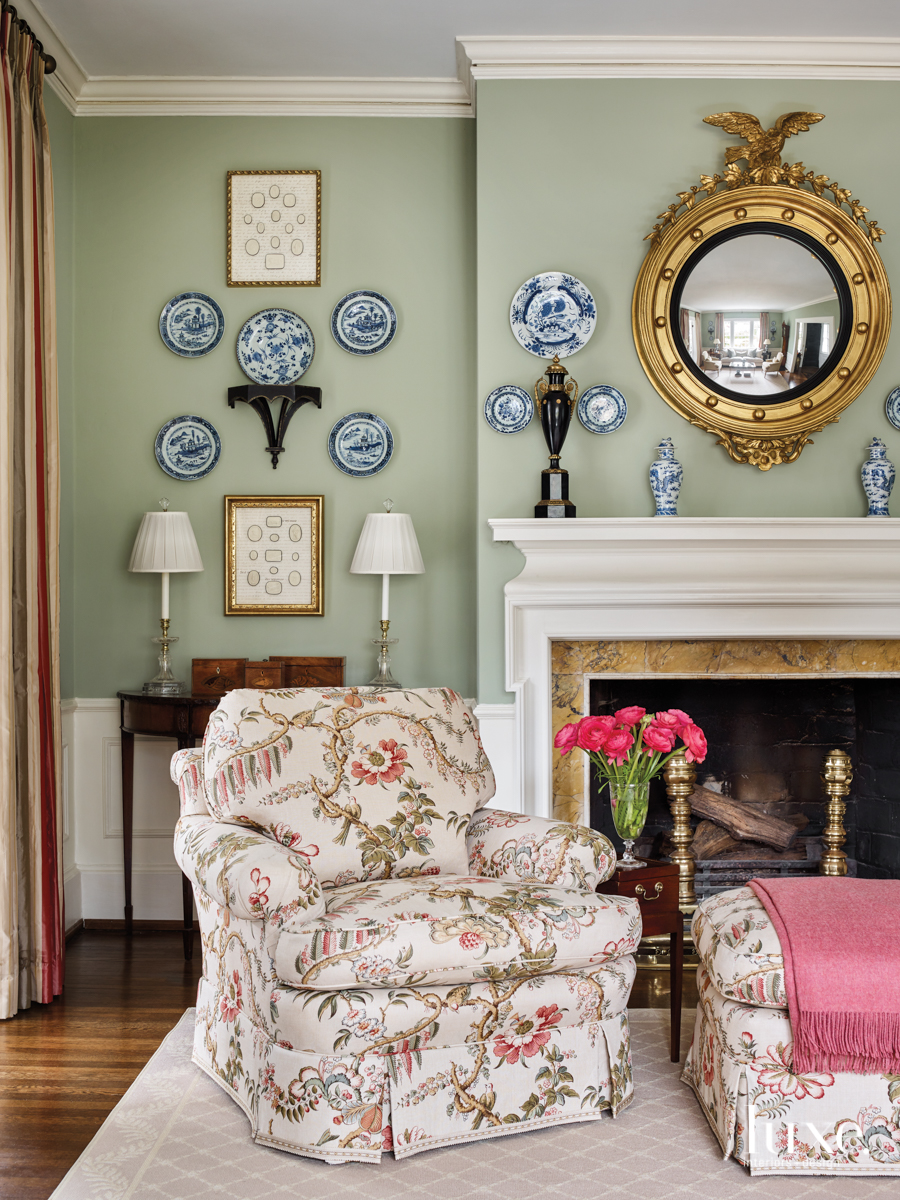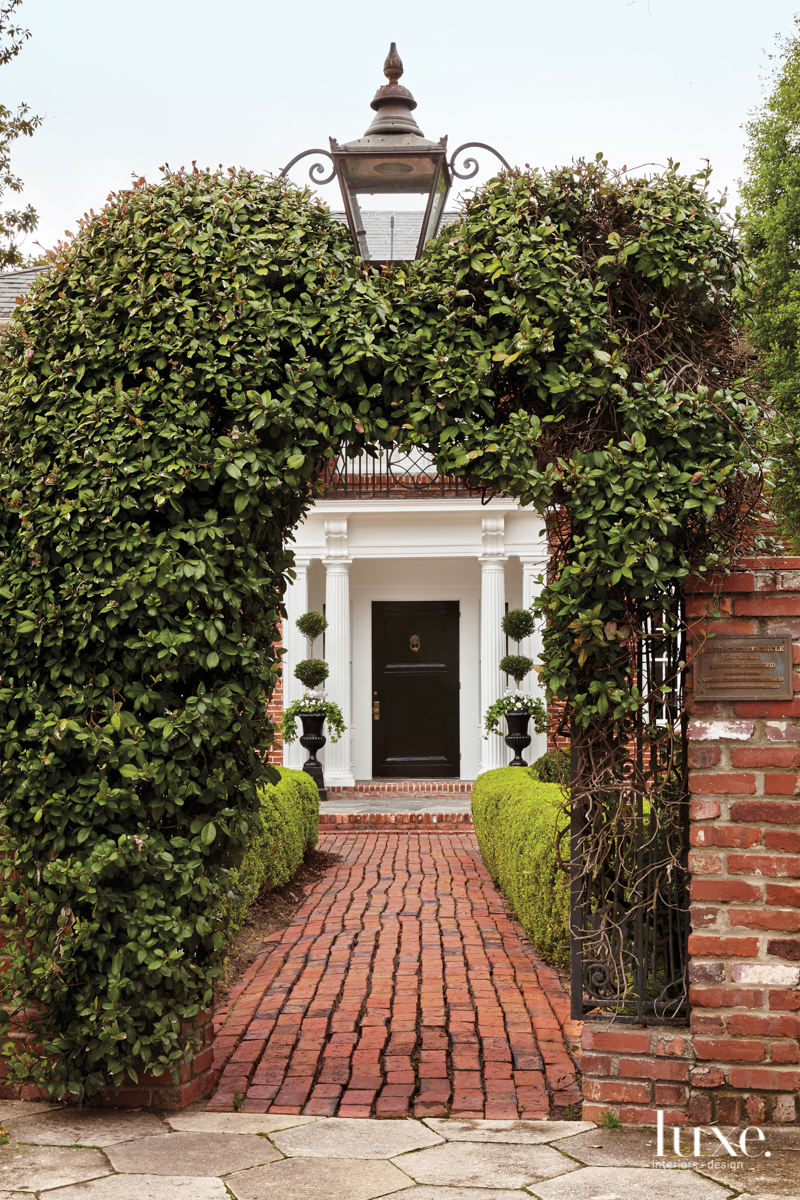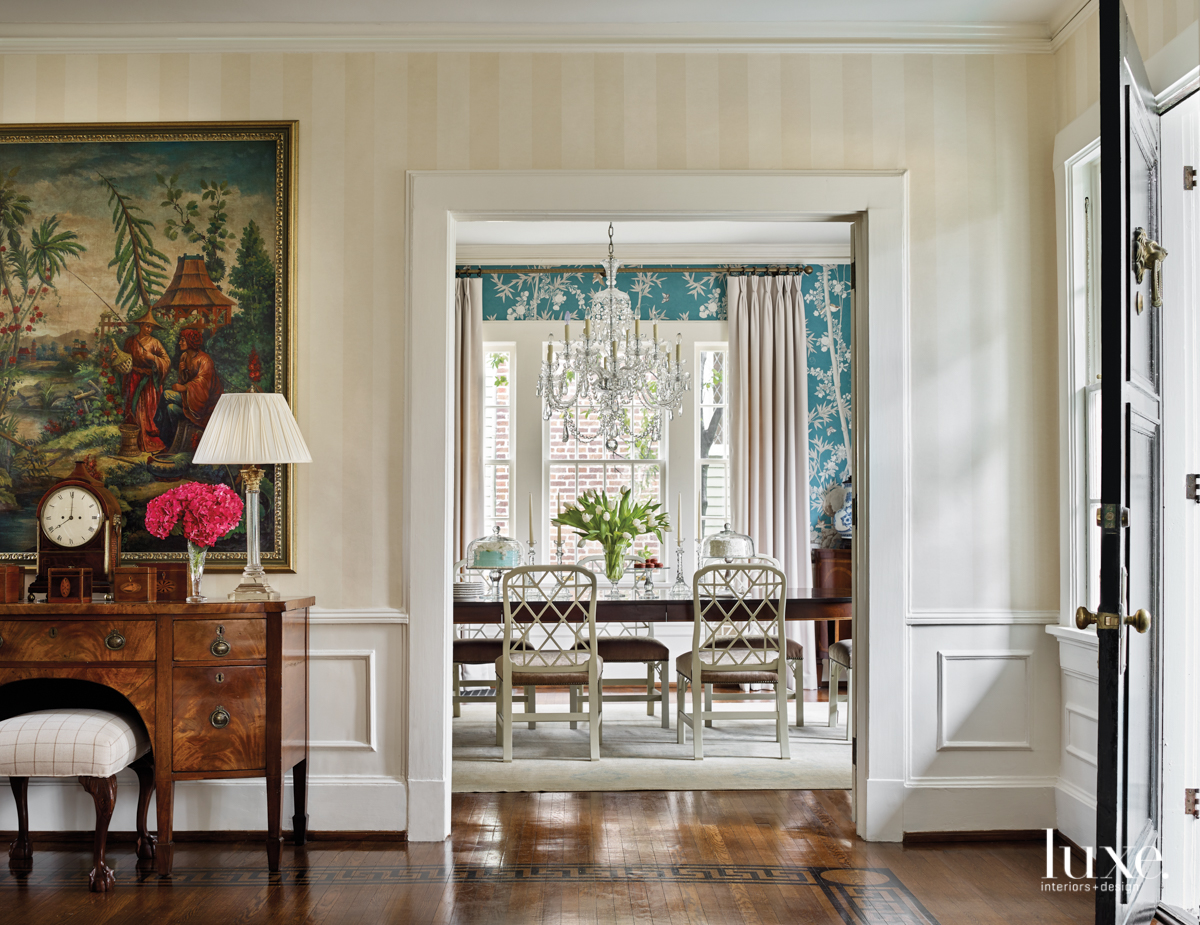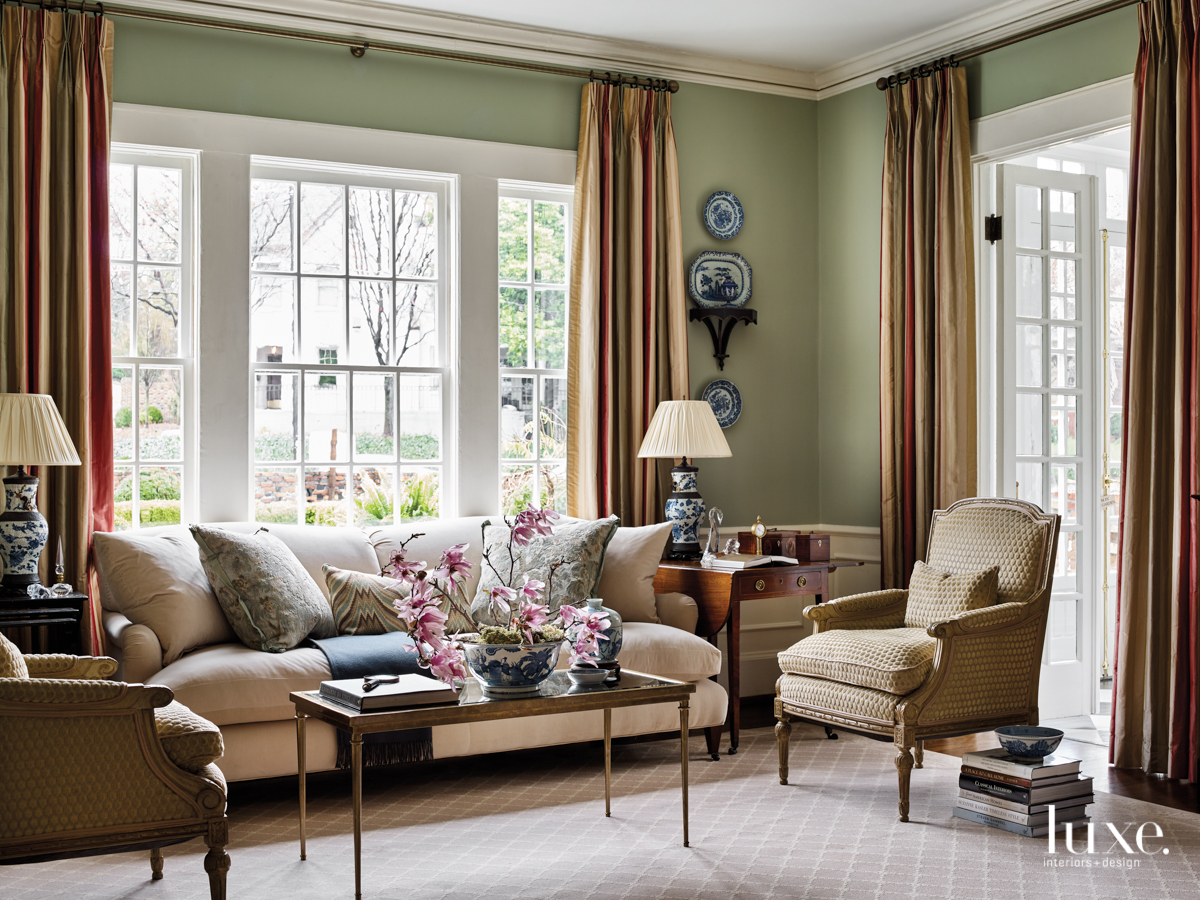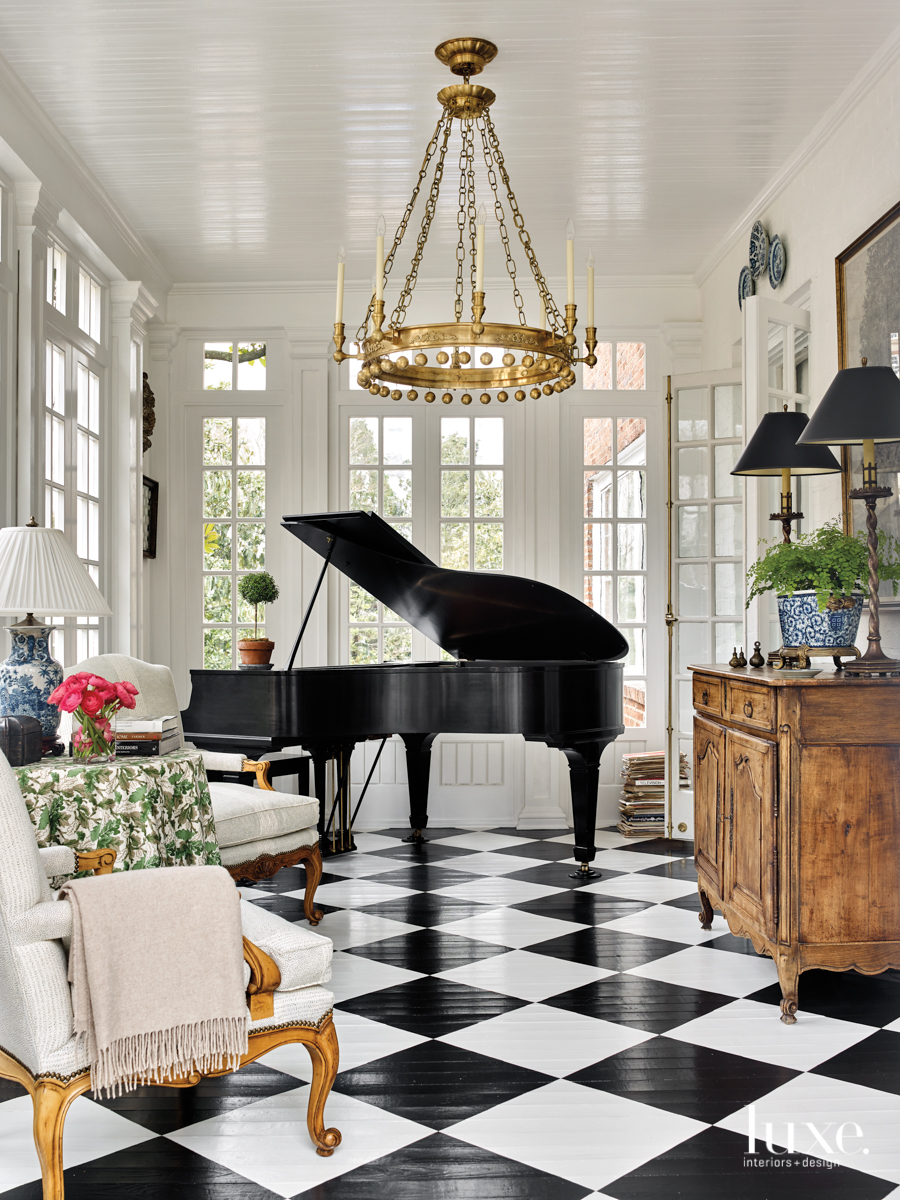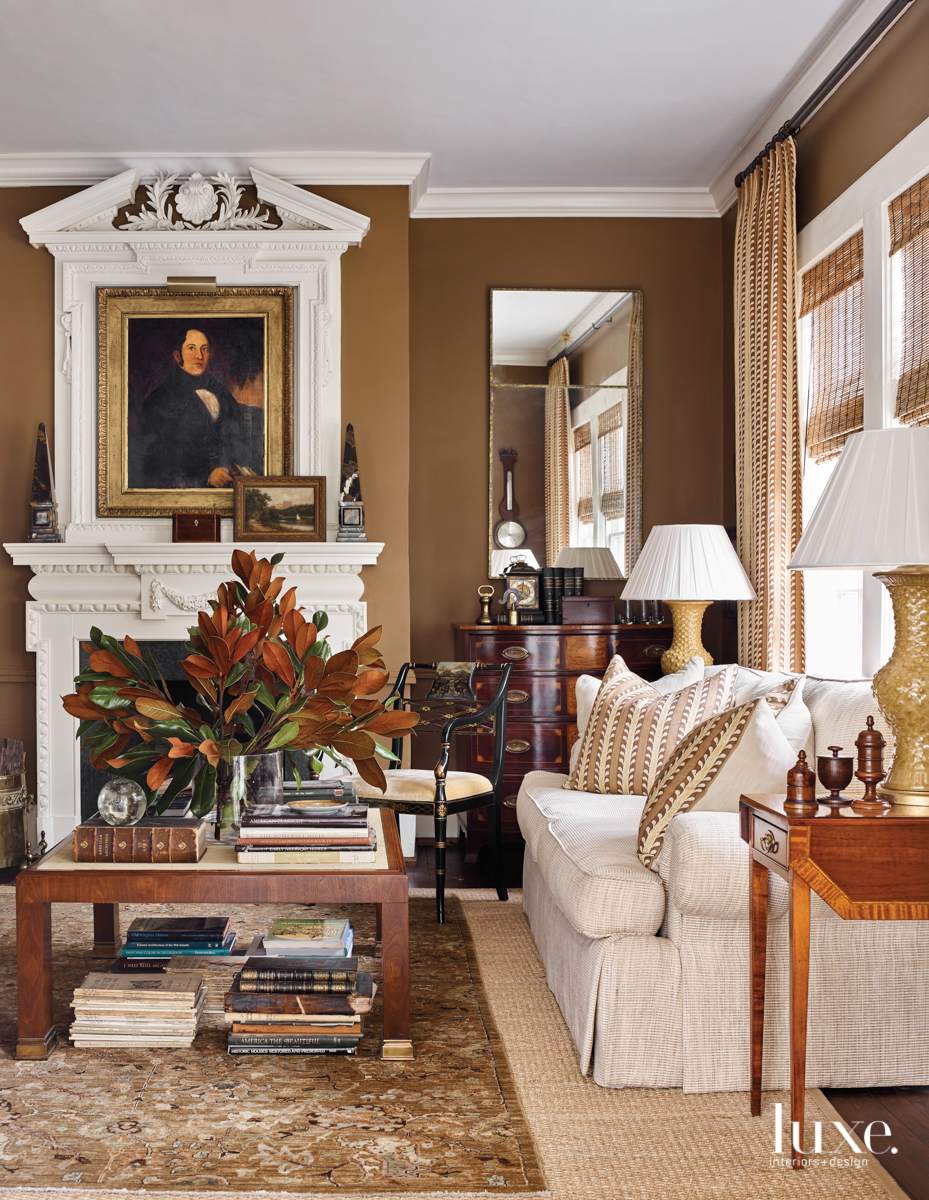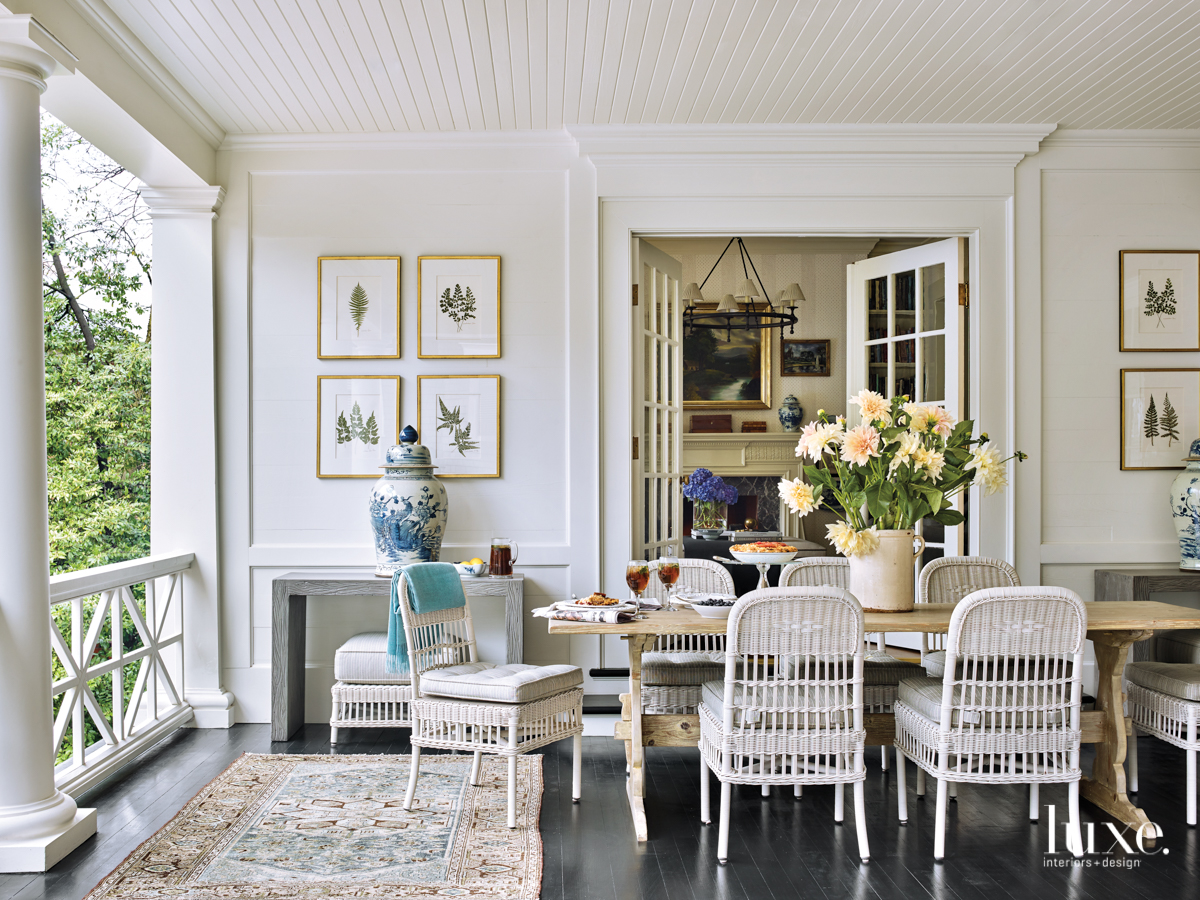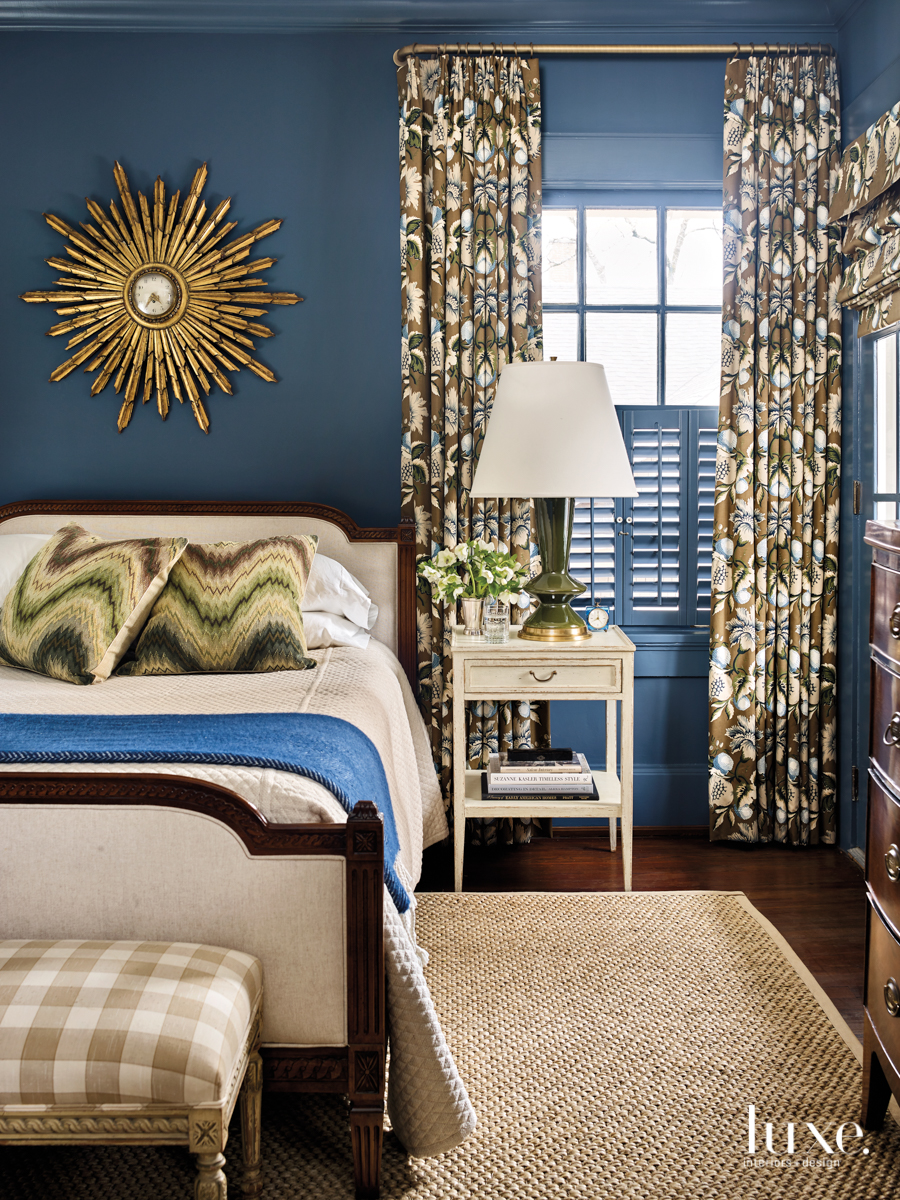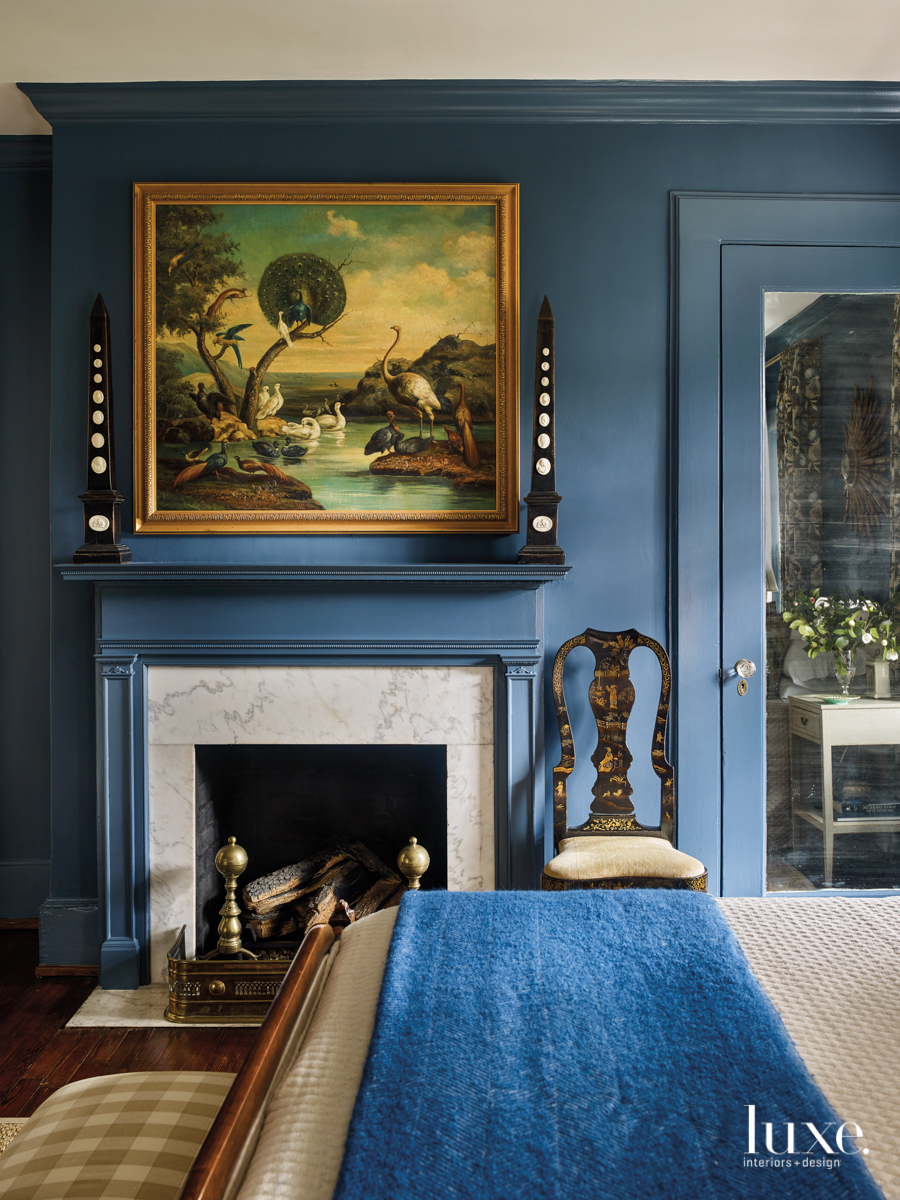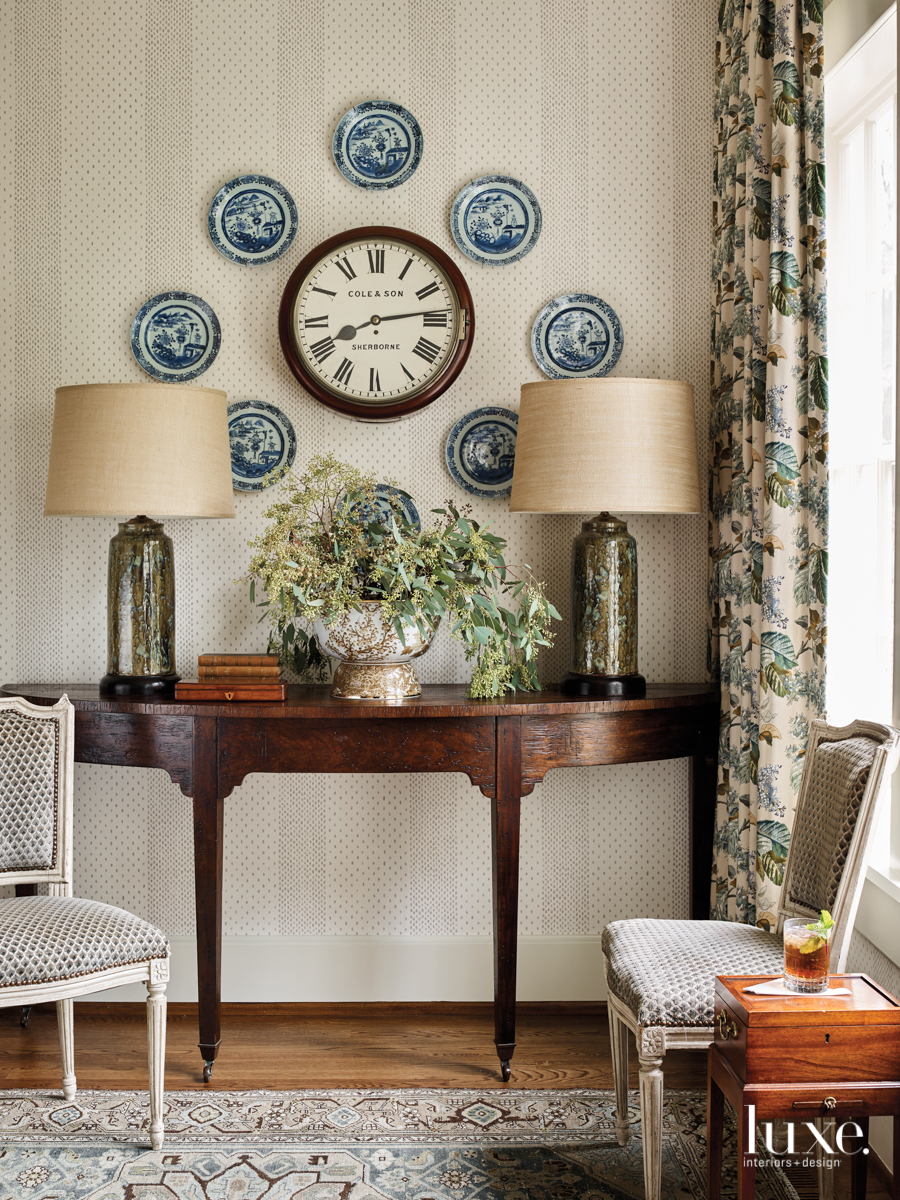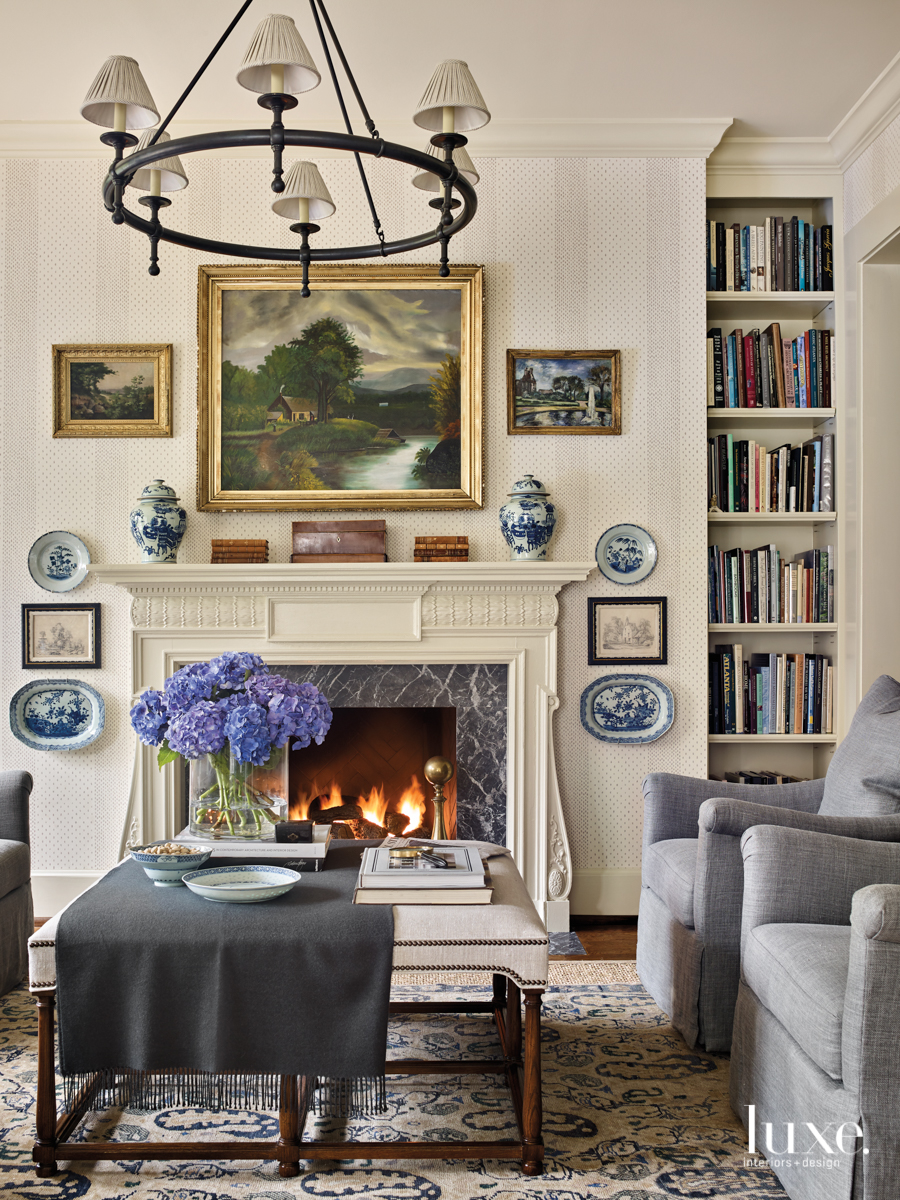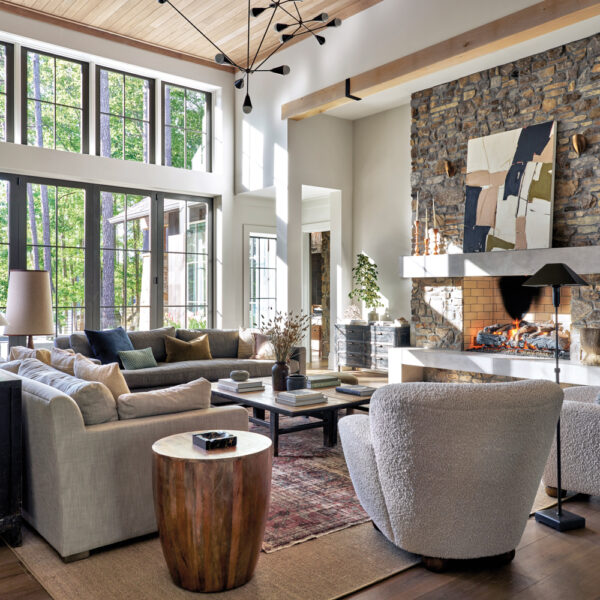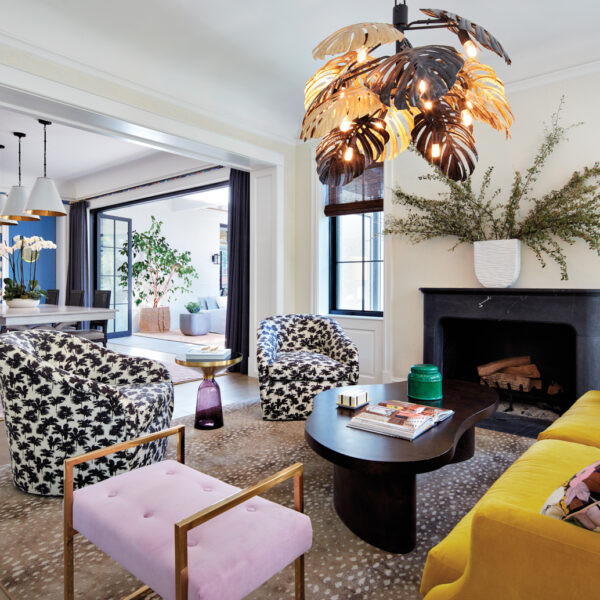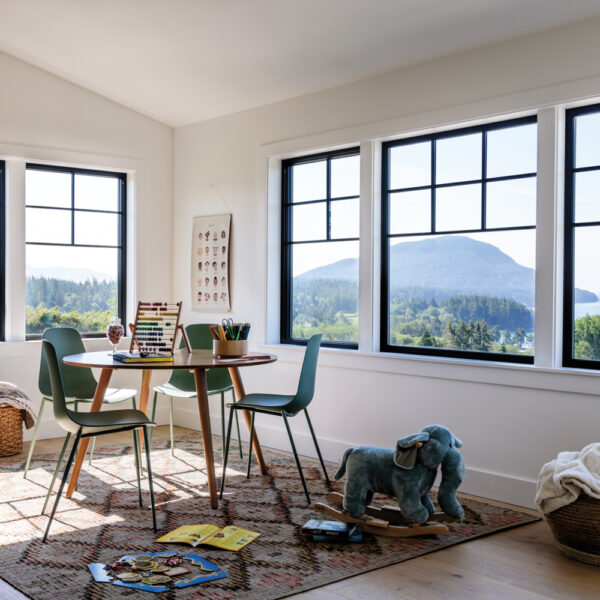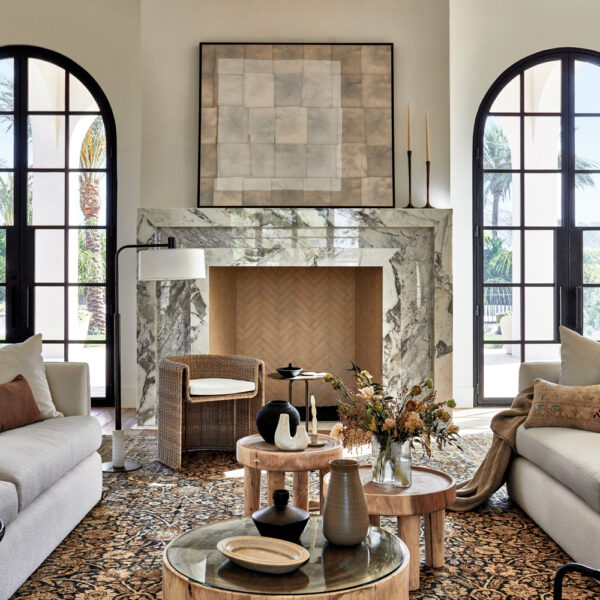An old-house enthusiast living in a city not especially known for preserving its historical architecture, designer Don Easterling seemed destined to become guardian of one of Atlanta’s scant surviving gems: a 1911 house designed by revered Georgia architect Neel Reid. An avid collector of antiques and architectural salvage, Easterling had spent years amassing hardware, woodwork and fireplace mantels retrieved from sites slated for demolition–many of them gracious Reid residences. So his, along with partner Michael Proctor’s, eventual purchase of this particular Ansley Park abode seemed almost providential.
Easterling soon discovered the house was brimming with history: Not only was the home “a Neel Reid,” to quote Atlanta parlance, but late Democratic Party stalwart Robert B. Troutman and his wife had lived in the residence from 1929 to 1980. Adding to the designer’s excitement was the news that, during the 1960 presidential campaign, when John F. and Jacqueline Kennedy stumped for votes in Georgia, the Troutmans entertained the presidential hopeful and his wife in their home. Learning that the house had been minimally altered over the years sealed the deal, and Easterling and Proctor jumped at the opportunity to own a piece of Atlanta’s architectural and social past.
Considering its age, the house was in superb shape. But more importantly, “It had good bones,” Easterling explains. “Reid was called the ‘master of scale,’ so the size and proportions of the rooms are seemingly perfect.” Only the home’s fourth owners, the two men have taken their stewardship seriously–so much so that they spent more than a decade getting a feel for the house before embarking on any kind of architectural alteration. The renovations began with the kitchen, where Easterling incorporated modern updates such as an antiqued pewter hood and Calacatta Gold marble countertops. It was important that new features appear “as if they’d always been there,” says Easterling, so he repurposed the original windows and hardware while selecting finishes, fixtures and materials with period-appropriate flourishes.
This same scrupulous attention to accuracy was present in the most recent update, accomplished under the guidance of residential designer C. Brandon Ingram and builder Pat Kurek. Their endeavors added a new keeping room and bi-level back porch, plus a pool and pavilion that play to the hallmarks of Reid’s portfolio. “It was fun to continuously ask myself the question, ‘What would Neel Reid do if Don were his client?’ ” Ingram says. “As homeowner, designer and architectural historian, I think Don would have been a dream client for Reid.”
Ingram’s approach to the lower porch includes granite-covered walls and columns–an idea taken from the granite used for the home’s foundation–while the railings of the porch above are heavily reminiscent of Reid’s work. “We wanted this space to look like a Charleston porch, so we chose a classic Charleston black-green paint color for the floors,” Easterling says, adding that, “We made sure the doors of the study and keeping room would open on to the porch for ease of entertaining. There is a very good flow to the house.” For the designer, it was imperative that the home’s additions look original, so he sourced historic hardware, hinges and mantels for each space, also ordering custom windows milled to match those found elsewhere in the house–with circa-1900 mouth-blown glass for a timeless “wavy” appearance.
The scope of renovations signaled an interior redo was imminent, and designer Nina Nash, Easterling’s design partner of nearly a decade, was delighted to contribute. “We consult each other on everything,” Nash notes of her longtime mentor, so it was only natural that she would lend her talents to Easterling’s personal home.
A native South Carolinian, Easterling is drawn to soft colors and classic floral fabrics as well as antiques–especially English clocks and tea caddies, blue-and-white Chinese export porcelain and anything chinoiserie in style. Due in large part to Easterling’s influence, Nash has grown to love antiques and traditional furnishings, but treats them less reverentially, preferring to mix in bold colors, lively wallcoverings and modern touches like Lucite. In Easterling’s home, Nash had the opportunity to champion both. Take, for example, the dining room where JFK and Jackie enjoyed meals so many years ago. A stately mahogany table and pair of demilune commodes appropriate for the room’s traditional purpose pops against a comparatively chromatic Chinese-inspired wallpaper in a spirited turquoise.
Although the living room touts a historic Charleston color and ample traditional appointments (framed intaglios, antique English andirons, chinoiserie nesting tables), it favors freshness over historical accuracy; evident by its comfortable upholstery and an acrylic drinks table–the latter no doubt due to Nash’s influence. “That’s about the only modern thing you’ll find in the house,” quips Easterling.Notes Ingram, “The classic nature of Neel Reid homes gives them an inherent and lasting sense of endearment.” And Easterling’s commitment to meticulous maintenance of his own, even in its augmentation, seems to guarantee its aesthetic longevity. Surely–that means this distinguished house is poised for another century of gracious living.

